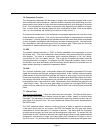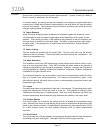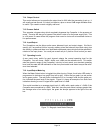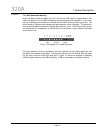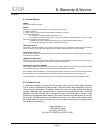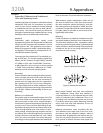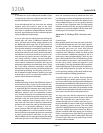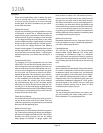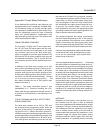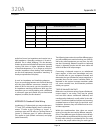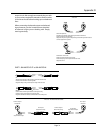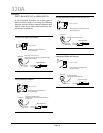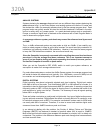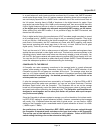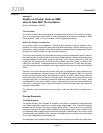
Page 29
Appendix C: Proper Wiring Techniques
A true balanced line should be used wherever your
equipment allows. Use “twisted pair” shielded cable.
For unbalanced wiring you should use high grade,
low capacitance shielded wire for best results. If you
have an unbalanced output but have a balanced
input, the “pseudo-balanced” conguration may
help deal with ground loop hum. This method and
others are illustrated in Table 2.
CONNECTOR WIRING STANDARDS
The 3 pin XLR, 1/4” (63.5 mm) TS mono phone and
the 1/4” (63.5 mm) TRS stereo phone are the most
commonly used line level connectors in pro audio.
Less common is the use of the “RCA” phono jack,
which is essentially a consumer type connector. The
XLR and the TRS are three conductor and are used
for balanced connections. The TS and the RCA are
two conductor and are used for unbalanced connec -
tions.
In addition to the three main contacts on an XLR
there is also a grounding lug contact. This lug is con -
nected to the connector’s case (shell). In all Aphex
products audio ground and chassis ground are one
and the same. Aphex products that use XLR connec -
tors tie Pin I to the XLR case automatically. Therefore
it is not necessary to use the XLR case-ground lug. This
also makes possible the use of XLR ground drop
adapters (see Note 3).
TABLE 1: The wiring convention shown is now
standardized in 17 countries including the USA.
Please note that any equipment that still uses Pin 3
as positive on XLR connectors is not adhering to the
standard.
THE PIN 1 DILEMMA AND HOW IT AFFECTS CABLE
SHIELD CONNECTIONS
The three main contacts on an XLR (or TRS) and
the accepted wiring assignments shown above are
only part of the picture. The standard for terminat -
ing ground is Pin 1 (Sleeve). But which ground? It
could be connected to audio signal ground or chassis
ground depending on the method of grounding used
by the equipment manufacturer. In all Aphex prod -
ucts audio ground and chassis ground are one and
the same at all I/O jacks. This is just good, common
sense engineering practice (which is what you would
expect from us, course). Unfortunately, many prod -
ucts are designed so that the noisy currents from
the shield drain into signal ground instead of chas -
sis ground. This practice creates a real hum and
noise problem for end-users. The appropriate overall
grounding scheme of an audio system would be a lot
easier to predict without this problem
1
.
The standard balanced line wiring recommenda -
tion from Aphex Engineering is this: In the majority
of cases maximum noise rejection occurs when the
shield is connected to the input ground only (espe -
cially in locations with high levels of RFI). That means
the sending end shield should be left disconnected.
However, if you already have cables with the shield
connected at both ends, go ahead and try them
out. If you are connecting a fairly simple audio
system it may be ne as is.
A word on optional shield connections: Connecting
the cable shield of a balanced line at both ends cre -
ates unnecessary ground loops which may carry noise
and hum currents that can be amplied. Connecting
the shield only at the sending end (instead of the
receiving end) may exaggerate common mode noises
at the receiving input stage. It can actually increase
RFI and noise more than having no shield at all.
Because of the “Pin I Dilemma” (mentioned above)
you may be forced, in some situations, to experiment
with how the cable shield is connected to ground to
eliminate a pesky hum or radio interference problem.
It might be good to try XLR ground drop adapters
(see Note 3) as a method of trying these conicting
methods out and being able to change easily if nec -
essary.
IMPEDANCE
Regardless of inaccuracies, it has become more or
less standard over the years to refer to balanced
lines as low impedance and unbalanced lines as high
impedance. The fact is, however, that both balanced
and unbalanced lines are operated at low imped -
ance in modern practice owing to the fact that all
output stages have become low impedance. A few
exceptions might be outputs from passive mixers,
instrument pickups, electric guitars and some key -
board synthesizers. It is generally ideal to drive any
Appendix C



